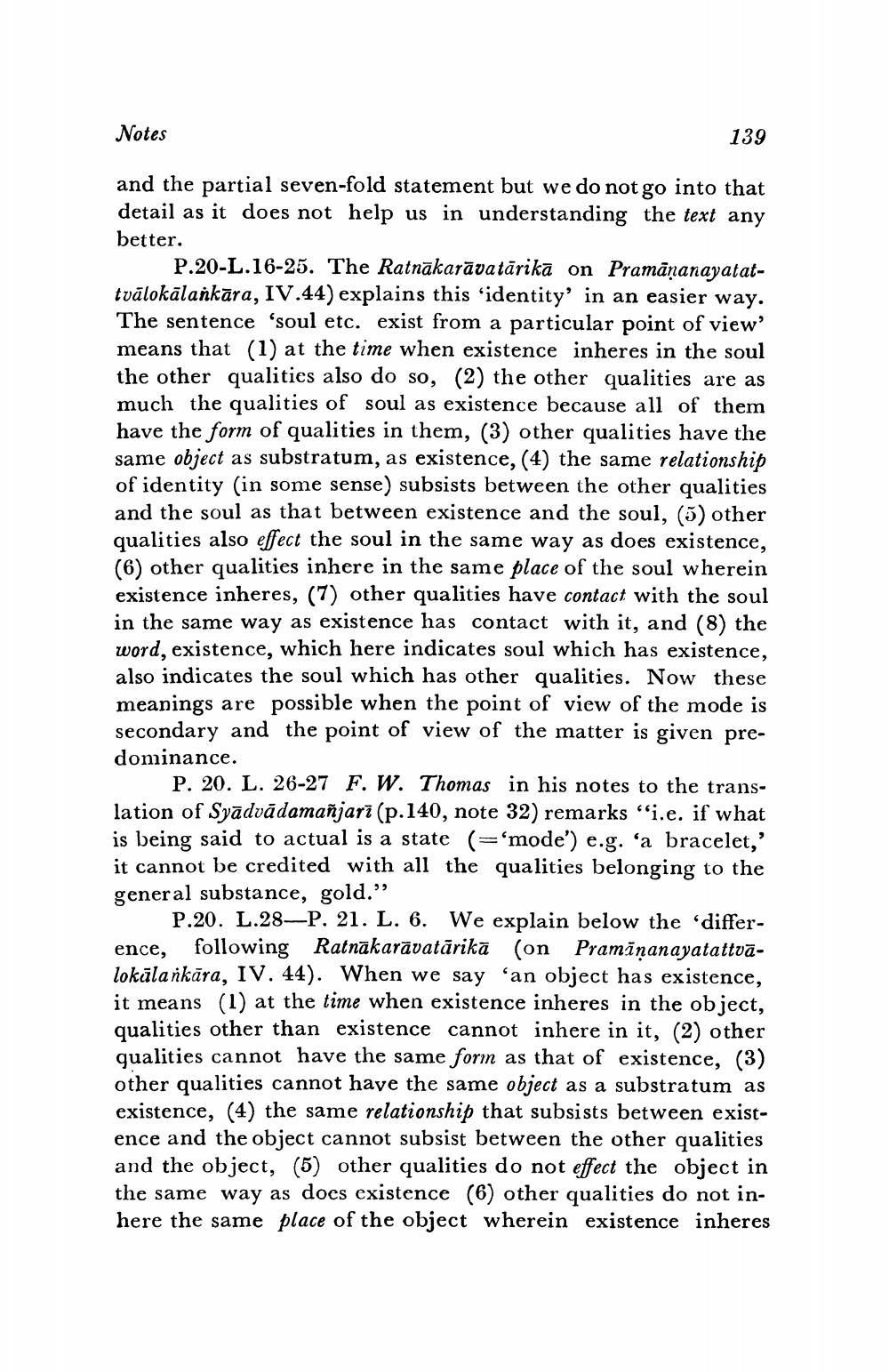________________
Notes
139
and the partial seven-fold statement but we do not go into that detail as it does not help us in understanding the text any better.
P.20-L.16-25. The Ratnākarāvatārika on Pramāṇanayatattvālokālankāra, IV.44) explains this 'identity' in an easier way. The sentence 'soul etc. exist from a particular point of views means that (1) at the time when existence inheres in the soul the other qualities also do so, (2) the other qualities are as much the qualities of soul as existence because all of them have the form of qualities in them, (3) other qualities have the same object as substratum, as existence, (4) the same relationship of identity (in some sense) subsists between the other qualities and the soul as that between existence and the soul, (5) other qualities also effect the soul in the same way as does existence, (6) other qualities inhere in the same place of the soul wherein existence inheres, (7) other qualities have contact with the soul in the same way as existence has contact with it, and (8) the word, existence, which here indicates soul which has existence, also indicates the soul which has other qualities. Now these meanings are possible when the point of view of the mode is secondary and the point of view of the matter is given predominance.
P. 20. L. 26-27 F. W. Thomas in his notes to the translation of Syadvādamañjari (p.140, note 32) remarks ".e. if what is being said to actual is a state (='mode') e.g. 'a bracelet,' it cannot be credited with all the qualities belonging to the general substance, gold."
P.20. L.28-P. 21. L. 6. We explain below the difference, following Ratnakarāvatārika (on Pramīṇanayatattvalokālankāra, IV. 44). When we say 'an object has existence, it means (1) at the time when existence inheres in the object, qualities other than existence cannot inhere in it, (2) other qualities cannot have the same form as that of existence, (3) other qualities cannot have the same object as a substratum as existence, (4) the same relationship that subsists between existence and the object cannot subsist between the other qualities and the object, (5) other qualities do not effect the object in the same way as does existence (6) other qualities do not inhere the same place of the object wherein existence inheres




